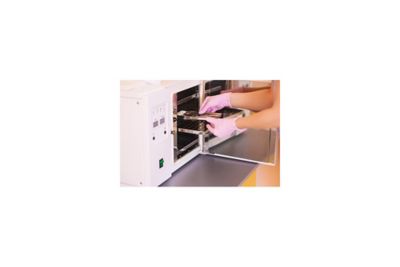-
United States -
United Kingdom -
India -
France -
Deutschland -
Italia -
日本 -
대한민국 -
中国 -
台灣
-
Ansys s'engage à préparer les étudiants d'aujourd'hui à la réussite, en leur fournissant gratuitement un logiciel de simulation.
-
Ansys s'engage à préparer les étudiants d'aujourd'hui à la réussite, en leur fournissant gratuitement un logiciel de simulation.
-
Ansys s'engage à préparer les étudiants d'aujourd'hui à la réussite, en leur fournissant gratuitement un logiciel de simulation.
-
Contactez-nous -
Carrières -
Étudiants et universitaires -
-
S'inscrire -
Déconnexion -
Espace client -
Support -
Communautés partenaires -
Contacter le service commercial
Pour les États-Unis et le Canada
+1 844.462.6797
-
ANSYS BLOG
October 9, 2019
Using Biomedical Materials within a Circular Economy
In the past, doctors routinely sterilized and reused medical tools like bandages and syringes. However, with the invention of polymers and other advanced biomedical materials, engineers focused on designing disposable medical products which helped minimize infection.
Throughout various industries, engineers are creating more sustainable designs. So, how can reusability and sustainability be incorporated into modern biomedical material and product designs?
The medical field relies on
disposable biomedical materials.
But does it have to?
One solution is to focus on building a circular economy for biomedical materials and teaching these concepts to future engineers.
How to Transfer from a Linear to a Circular Economy Using Biomedical Material
Industrial ecologists define the circular economy as a framework where raw and used material or products are looped within a system — like nature’s carbon and water cycles. The circular economy aims to eliminate waste by lengthening a product’s life or reusing waste. Conversely, the linear economy follows the take, make, use and dispose approach.
A circular economy is created when the waste that leaks out of the system
is reduced. Engineers need to design ways to recycle the waste back into the system.
The mechanisms by which products become waste can be interpreted as a loss of perceived value. This loss is caused by several factors:
- Physical obsolescence: the product breaks down beyond economic repair
- Functional obsolescence: the product is no longer needed
- Technical obsolescence: the product is outperformed by newer technology
- Economic obsolescence: the product it is no longer profitable
- Legal obsolescence: the product is made illegal due to regulation changes
- Desirability obsolescence: the product is no longer aesthetically appealing
To maintain circular economies, obsolete products must be recovered and restored to economic value by addressing all the factors that make it undesirable.
The common belief is that engineers will face a lot of complexity transferring the healthcare industry into a circular economy because the waste is often discarded for safety reasons. This can be thought of as hygienic obsolescence.
Nevertheless, the World Health Organization (WHO) estimates that 85% of the waste produced from healthcare activities are non-hazardous. Therefore, with an appropriate recovery strategy, there is a lot of transformation potential in the medical industry..
How Engineers Will Design a Circular Economy for Biomedical Materials
Engineers will find it tricky to redesign medical devices to be sustainable since any reduction in functionality, or increased risk, could endanger a patient’s life. Additionally, there will be logistical questions surrounding waste retrieval and acceptance barriers.
However, if a catheter could be sterilized to regulatory standards, while maintaining functionality, then theoretically it could be used indefinitely. The trick is to select biomedical materials that can be easily reused, sterilized and recycled.
To turn healthcare into a circular
economy, engineers need to
select biomedical materials
that can be sterilized, maintain
functionality and meet
regulatory standards.
To learn how to select sustainable biomedical materials — using CES EduPack and the Eco-Audit Tool — or how to introduce these concepts into an undergraduate curriculum, watch the webinar: Biomedical materials and the Circular Economy.
Learn how to improve the efficiency of a medical device using simulation.













